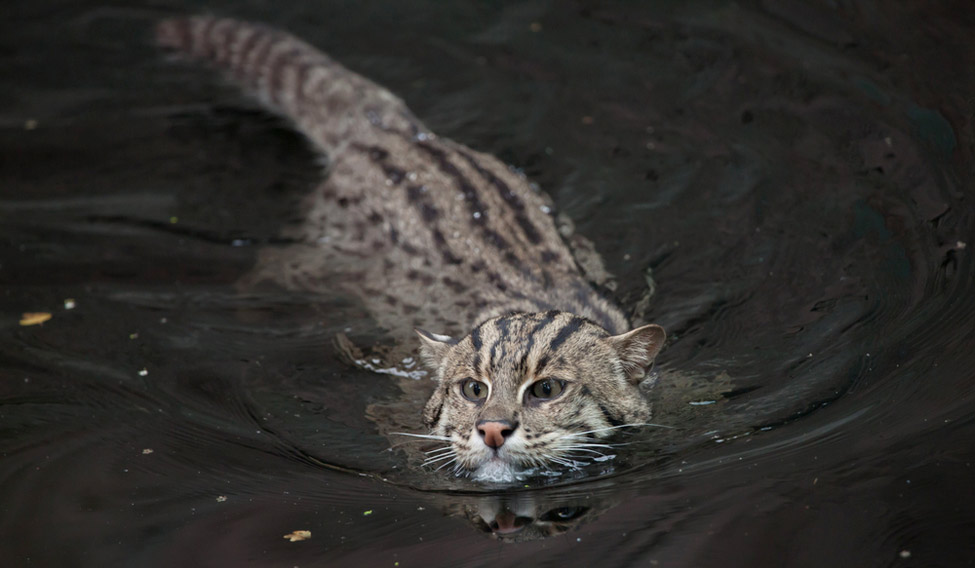The elusive and endangered fishing cat—almost twice the size of a house cat—is under significant threat of local extinction in India and Sri Lanka, a US-based Indian biologist has warned.
This species is believed to be almost extinct in Indonesia.
"Several small projects and studies in the recent past, especially in India and Sri Lanka, have shown that fishing cats are now restricted to small, isolated, fragmented populations that are under significant threat of local extinction," Fishing Cat Conservancy President Ashwin Naidu said in an email interview.
The fishing cats, a wetland-adapted species, are found in over 11 countries in south and southeast Asia, from Pakistan to Indonesia. But it's one of the least studied wild cat species globally.
Naidu, currently working in coastal south India on community-based conservation of this species, said like other wild cat species, the primary threats to the fishing cat survival are aquaculture, agriculture, hunting, poaching and retaliatory killing by livestock owners.
Many mangroves where the fishing cats live are quickly being lost to deforestation and aquaculture.
In Sri Lanka, fishing cats occupy many inland wetlands and are often subject to injuries due to road traffic and constructions such as water wells.
According to Naidu, the human demands have reduced and fragmented wetlands and coastal mangroves that these cats need to survive. "Yes, aquaculture is probably the biggest threat to this species since it is responsible for anywhere between 50-80 per cent of the lost mangrove forest cover throughout south and southeast Asia."
Wetlands along the major river systems leading down to their estuaries and mangroves—the Ganges, the Yamuna and the Brahmaputra rivers leading up to the Sundarbans; the Mahanadi and the Brahmani river deltas in Orissa; and the Godavari and Krishna river deltas in Andhra Pradesh—are the fishing cats' habitat.
Naidu said fishing cats are probably locally extirpated in many parts of what may have been their former range—wetlands along all these major rivers' paths or watersheds.
They are now restricted mainly to the few areas that are relatively protected like the national parks and sanctuaries along these river systems.
"However, it's important to note that there are many wetlands and mangroves outside protected areas where these cats have been recently documented and it is important to work towards protecting these yet unprotected and undesignated coastal mangroves and wetlands where these cats still survive," the biologist said.
Surprisingly, no one knows about or has estimated the number of fishing cats, which prey primarily on fish and crustaceans, in the wild.
"Studies are needed to estimate their numbers at the local, regional and global scales," Naidu said.
Fishing Cat Conservancy's community-based conservation programmes are centred on education and capacity-building to enhance local involvement, especially in and near areas where fishing cats occur in India.
A majority of its work's focus is on areas outside protected regions where conflicts and the potential for conservation are higher than inside already established protected areas.
"We function with an open-access, science-based conservation philosophy and share knowledge with everyone interested in wildlife conservation," an optimistic Naidu said.
He favours more research and conservation efforts, particularly long-term community-based conservation efforts, required to protect the fishing cat and their globally important wetland and mangrove habitats.
—IANS






